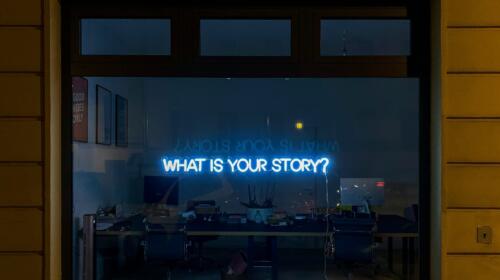 I’m sure you haven’t failed to notice that Facebook has recently made changes to its algorithm. The reason for this adjustment: keep users on the platform for longer and keep their attention with relevant content. And this isn’t surprising since the ultimate goal of every social platform is user loyalty. The reason for this is simple: more users and a longer period of use provide more ‘space’ for advertisements. Loyalty is therefore a rewarding business model.
I’m sure you haven’t failed to notice that Facebook has recently made changes to its algorithm. The reason for this adjustment: keep users on the platform for longer and keep their attention with relevant content. And this isn’t surprising since the ultimate goal of every social platform is user loyalty. The reason for this is simple: more users and a longer period of use provide more ‘space’ for advertisements. Loyalty is therefore a rewarding business model.
Role of the website within online marketing objectives
With user loyalty in mind, you may wonder whether linking to an external site from your social channels is still useful? Think about how you react to social platforms that include external links. Do you believe them yourself? There’s a reason it’s not even possible on Instagram. And you can clearly see the performance of messages on social that DO include links. Social platform algorithms clearly prefer ‘native’ content. Just place a video directly on Facebook and compare it to a post that refers to a YouTube video. In all probability the native video performs better.
Is linking to an external site from your social channels still useful?
The same applies to messages with an external link in it. The best performing messages on LinkedIn do not contain a link to an external site. The moment you post a message the algorithms will detect that you have an external link in your message and your message will start lagging behind the rest of the messages in the timeline.
The conclusion you then draw is perhaps to never link from social, but that seems unwise to me. The importance of your own website in your content strategy is far too great to stop generating traffic. But, in my opinions, social channels come and go. It makes sense to get started with the popular social platforms, but you also depend on the tech giants. This is also called digital sharecropping. It is as if you are growing your (digital) crops on the fields of a liege lord. If it suddenly changes its conditions, you have no leg to stand on.
Borrowed media
We as an agency often leave the social channels of a customer under the heading of ‘owned’, but actually you have little influence on the popularity of a social platform. When users start to leave a social platform, your carefully built-up audience also evaporates. You can be careful to temporarily lend space on a social media platform that will come into direct contact with your target group. But, when the ‘borrowed media’ lose their relevance, it becomes clear how important it is to find a balance between content specific to social and content on your own website that you distribute via social.
When users start to leave a social platform, your carefully built-up audience also evaporates.
I don’t have a glass ball, but the probability of your website just disappearing greater than Facebook, Twitter, Instagram, etc. remaining dominant. What’s my advice? Keep investing in a prominent place for your website. A hub for your content strategy where all your articles, videos and visuals live that promotes the sustainability of your brand and content.
And if you really can’t resist, here’s a little trick: place your link in the comments, not immediately after posting, but after the message has received some reach and engagement.
This blog post appeared earlier on Marketingfacts.



